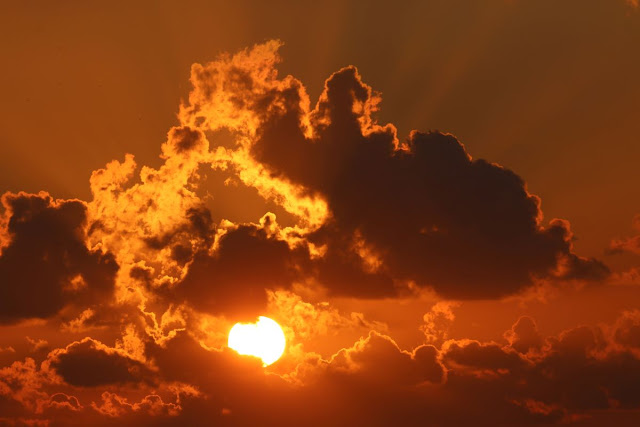The last week of October (2019) was very busy for me with planed and unplanned events that I photographed.
On Saturday evening (26th) there was a thunderstorm a bit from me so most of the lightnings were far. and yet some were very close like this one.
There are several methods to capture lightnings. One way is to put a camera on tripod and set it for long exposures of 5 seconds, hoping to catch something. If the storm is heavy you can try and take a video, even with your smartphone, using the slow motion option, which works better than regular video even that it has a limited duration.
There are several methods to capture lightnings. One way is to put a camera on tripod and set it for long exposures of 5 seconds, hoping to catch something. If the storm is heavy you can try and take a video, even with your smartphone, using the slow motion option, which works better than regular video even that it has a limited duration.
 |
| A lightning 26-Oct-2019 |
On Sunday I noticed lightnings in a very far cloud (70 km from me). It was very strange to see these far away lightnings within the cloud as can be seen in this short movie.
A longer version is in you tube
Tuesday (29th) was the first option to see the new moon. Stating with a nice sunset, I spot the moon, and as a bonus Venus and Mercury were close as well.
In the photo with all three it is clearly seen that while Venus is more or less on the ecliptic, The moon is norther and Mercury is to the south.
 |
| sunset 29-Oct-2019 |
 |
| The new moon 29-Oct-2019 |
 |
| The new moon, Venus and Mercury 29-Oct-2019 |
 |
| The new moon 29-Oct-2019 |
Just two days later a close conjunction (about 1 deg) of Jupiter and the moon
 |
| The moon and Jupiter 31-Oct-2019 |
And only two days later, just a few hours after the conjunction with Saturn
 |
| Moon and Saturn 2-Nov-2019 |
What a nice week!



